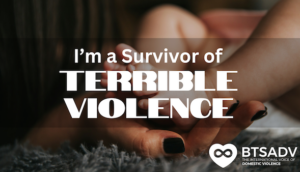By: Rebecca Lynn
Identifying digital abuse can be complicated. The article “What is Digital Abuse?” goes into depth about ways that abusers can use technology to further abuse their victims. However, identifying it is only the beginning. Preventing future abuse and protecting oneself from current abuse is equally as important.
Digital Abuse is prevalent in one way or another in nearly every domestic violence relationship. The websites of domestic violence organizations have “escape” buttons that allow victims to exit the page if their abuser were to walk in. Yet, simply exiting a page is not always a guarantee of security.
For victims that are living with their abusers, digital abuse tends to consist of tracking computer activity, phones, cars, hiding cameras and audio recording devices, and using surveillance cameras to monitor the perimeter of the house. Most of these can be accomplished by merely installing spyware, which can take less than a minute or hiding devices that the victim is not aware of.
Other forms of digital abuse include not allowing the victim to password-protect their devices, preventing them from interacting on social media accounts, and sending excessive messages that are expected to be returned quickly. Digital abuse also includes check-in apps to determine the victim’s location and uses personal photos, videos, and information as a threat to post on social media.
When victims leave the relationship, the stalking, especially by digital abuse, does not end. Stalking is an abuser’s way to continue to control the victim, so significant measures should be taken to not only protect but also document the abuse so that it can be proven if needed, in a court of law.
According to Very Well Mind and Help Protect Yourself from Cyber Stalking, below are some steps that can be taken to protect a victim from digital abuse.
- Once the victim leaves, dispose of any electronics: phones, tablets, computers, etc. If this is not possible, consider talking to someone about checking for spyware, factory resetting your devices, and checking other items for tracking devices. Always change every password and cancel any joint accounts.
- Always log out of open programs when the computer is not in use and make sure a screensaver with a password is set up. The same goes for tablets and cell phones.
- Refrain from sharing passwords with anyone, change them often, and consider using a password encryption app to create passwords that are complex to crack.
- Delete and do not create any online public calendars that reveal times and locations.
- Turn off the metadata option on cell phones; metadata contains information that can provide a location to a stalker, also known as geotagging. Check if the metadata is on before posting pictures on social media.
- Avoid “checking in” apps, and request that friends not use tags in posts that include check-ins.
- Be cautious about everything sent. Pictures, personal information, videos, etc. can be used to harass further.
- Do not allow anyone else, including the abuser, to hold or have access to personal phones or devices. It takes a minute or less to install a tracker or spyware.
- Consistently check privacy settings on all devices to make sure minimal and secure information is being provided.
- Keep all information private on the internet.
- Monitor credit reports frequently for identity theft.
- Document and report any digital abuse to law enforcement.
Digital abuse can be hard to prove, mainly because of the often-unknown evidence requirements set forth by the justice system. According to the National Council of Juvenile and Family Court Judges and Technology Safety, below are some tips on documenting digital abuse.
- Emails contain contact IP addresses that can show where the email originated, providing the identity of the sender. It is imperative not to delete or forward abusive emails.
- When saving emails by printing or taking screenshots, make sure to save the email header, which is often hidden and can be found in the settings. This is where the IP information is stored. Depending on which email platform is used, the location of the header may vary.
- Printing emails may change their appearance, making it inadmissible as evidence. Try to take a screenshot of the email and then print it so that the format remains intact.
- If the email address is faked or spoofed, make sure to print out all relevant emails from that address, including the header and IP information.
- To be safe and not risk the abuser deleting emails, print them out, or take screenshots – including the headers. Do not forward the email, because this will cause loss of the identifying information that is required for evidence.
Text Messages
- Text messages can be accidentally or automatically deleted when left archived on phones. It is recommended to take a screenshot of the message as well as print it out. Make sure to include additional texts, not just an isolated message. It is best to show the context of the conversation thread so abuse or harassment can be proven.
- When taking screenshots of messages that are long and will require several different shots, it is essential to show that the message is linked to the previous screenshot. Move the page partly down so that the end of the last message overlaps and can be seen to show it is part of the same message.
- In addition to taking a screenshot of the message, take one of the contact page. Do this is to show that the abuser’s number is linked to the harassing message.
- If you are unable to take a screenshot on your device, take a clear picture of all necessary documentation and then print the image out.
- Wireless carriers only hold on to messages for a limited amount of time. If law enforcement is involved, ask them to send a preservation letter to the phone company as soon as possible so they can refrain from destroying any data.
Social Media / Internet
- Take a screenshot of any social media harassment or abuse. This may require taking several different shots to get the entire message, time, and date. Do not forget to print out the screenshots.
- Facebook is one of the more accessible social media platforms to document. Screenshot (or print) the message that will include the date, time, and a picture of the sender. Click on the profile picture, which should consist of more information about the sender’s image and name; these will show even if the account is private. If the abuser has liked or commented on a post, clicking on the post will bring up others that are linked to the sender. Take a screenshot of this as well, since it can be used to trace back to the sender. Facebook is equipped with the ability to allow their members to download everything ever uploaded. This function can be found at the Facebook Download Tool. The information may be lengthy, but the evidence will be clear.
- To document a harassing Instagram post, screenshot the picture and who posted it, which shows up above the photo. Take a screenshot of the comments, which will show the time, date, and username of the poster. In addition, pull up the abuser’s profile and take a screenshot of that as well. It is also important to make sure to click on the three dots next to the user’s name in the profile section and copy the profile URL. This will need to be documented as well as printed.
- Snapchat is one of the more difficult social media platforms to document evidence. Snapchat was created to provide the deletion of a picture or message after it is read, making it impossible to find, even by forensic investigators. It is crucial to save personal messages through a screenshot or saved to a photo library. Screenshots can be taken of a Snapchat message. However, the sender will be notified that a screenshot has been taken, which can put a victim in an unsafe situation. This can be avoided by taking a picture from another device.
- Twitter often requires more than one screenshot to provide evidence of harassment. This will include profile information, which will contain the username, photo, and other pertinent information.
- Instead of a screenshot, a video can be taken. Videos are helpful for websites that report to the sender when a screenshot is taken of their photo (such as SnapChat), which can put the victim in danger.
- If law enforcement is involved, they can send a letter to the specific social media platform or website and request that they not delete the information.
- Reporting the incident to the social media or website provider can help document reports and violations of the site’s terms and guidelines. Make sure to save all information before reporting in case the website deletes the abusive posts.
Phone
- Consider recording your phone conversations to document evidence of abusive and threatening phone calls. It is essential to first check state laws regarding recording phone conversations without letting the other person know.
- Document your call logs by taking a photo of the caller ID. Make sure to include the date and time of the calls. Include all phone calls, not just one. It is much easier to understand the harassment if a story can be told and patterns are proven.
- Keep phone records to show where the call originated with the date and timestamp.
- Record messages by using another recording device since phones are not able to be played in court as evidence. The specific state laws will need to be confirmed to determine if this is legal to play in court.
As always, safety is the primary concern, so if a victim is worried that documentation, screenshots, photos, password changes, etc. are going to escalate a violent situation, this should be taken into consideration. Finding a safe location to hide documentation or someone trustworthy to protect it can be a good alternative. Further information regarding gathering evidence for court can be found in 10 Steps for Presenting Evidence in Court. Each state is different in how it will accept and include digitally based evidence in abuse cases. It is imperative to research or contact legal support to ensure the documentation will be valuable.
If you or someone you know is in an abusive relationship, there is help. You can visit the Break the Silence Against Domestic Violence website at www.breakthesilencedv.org or chat with one of our helpline advocates at 855-287-1777.









